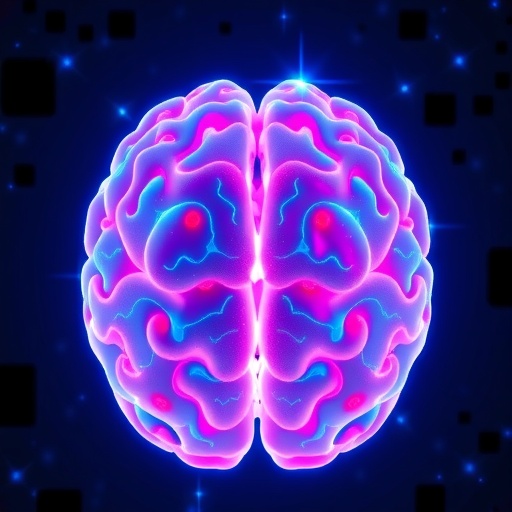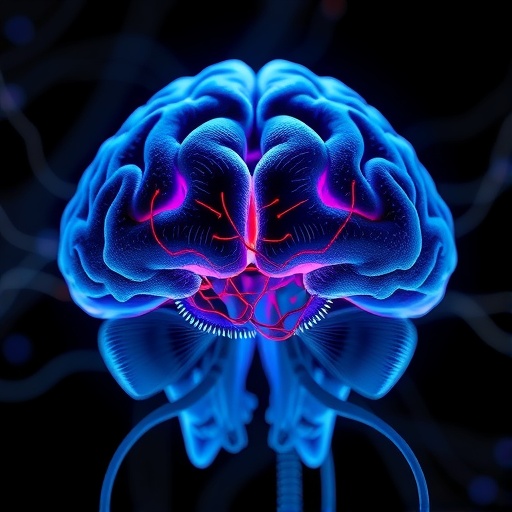Alzheimer’s Disease and Circadian Rhythms: Unveiling the Molecular Clock of Neurodegeneration
The progressive disruption of sleep and daily behavioral patterns is a hallmark of Alzheimer’s disease, often presenting long before the signature cognitive decline emerges. Patients with Alzheimer’s frequently experience fragmented nights, diminished restorative sleep, and compensatory daytime napping—symptoms that perplex clinicians and caregivers alike. This circadian disturbance not only erodes quality of life but also hints at a deeper, biologically driven dysregulation at the interface of neurodegeneration and the body’s internal timekeeping system.
Recent groundbreaking research conducted at Washington University School of Medicine in St. Louis elucidates the intricate ways in which Alzheimer’s disease reprograms the brain’s circadian gene expression. Through meticulous examination of gene activity within specific glial cell populations, researchers uncovered that the molecular circadian clock controlling brain function is profoundly disrupted by amyloid pathology. This discovery emphasizes that the disease is not solely a cognitive disorder but one that intricately intertwines with chronobiological mechanisms, fundamentally altering the temporal orchestration of gene expression pivotal for brain homeostasis.
The body’s circadian clock governs an estimated 20% of the human genome, a vast genetic network oscillating with roughly 24-hour periodicity to regulate diverse physiological processes ranging from metabolism and immune responses to hormonal secretion and sleep-wake cycles. In the brain, this rhythmic regulation ensures the precise timing of molecular events necessary for synaptic plasticity, neuronal repair, and waste clearance. Any aberrations in this rhythmicity could cascade into widespread dysfunction, potentially accelerating neurodegenerative cascades.
Utilizing murine models genetically engineered to accumulate amyloid-beta plaques—proteopathy characteristic of early Alzheimer’s—scientists harvested brain tissue samples at two-hour intervals over a full day-night cycle. This strategy enabled them to construct a temporal atlas delineating gene expression rhythms in the brain’s microglia and astrocytes, the glial cells instrumental for immune defense, synaptic support, and metabolic maintenance in the neural microenvironment. The results revealed a stark reprogramming of circadian gene expression profiles unique to amyloid burden, distinct from normal aging processes.
Microglia, the brain’s resident immune cells, execute critical clearance of neurotoxic debris including amyloid aggregates. The study found that amyloid pathology disrupted the rhythmic transcription of hundreds of microglial genes implicated in phagocytosis and inflammation, turning a once-coordinated temporal pattern into a fragmented, erratic activity. This misalignment likely impairs microglial efficiency, promoting a toxic milieu that fosters amyloid deposition and neuroinflammation—a self-perpetuating cycle exacerbating disease progression.
Similarly, astrocytes, which contribute to neuronal support by modulating synaptic transmission and maintaining the extracellular environment, exhibited altered circadian expression of genes governing their interactions with neurons and vascular structures. These circadian irregularities could compromise astrocytic regulation of neurotransmitter uptake, ion balance, and metabolic coupling, further destabilizing neuronal circuits and potentiating cognitive decline through yet unexplored pathways.
Intriguingly, beyond silencing traditional circadian regulators, amyloid accumulation induced novel rhythmic expression patterns in an array of previously non-circadian genes. Many of these genes orchestrate the brain’s inflammatory responses, indicating that Alzheimer’s neuropathology co-opts the circadian system to modulate immune activation in a temporally dysregulated manner. This aberrant oscillation might contribute to neuroinflammation’s nocturnal exacerbation observed clinically in Alzheimer’s patients manifesting sundowning symptoms.
At the molecular level, the investigation builds upon earlier discoveries implicating the protein YKL-40, which normally fluctuates with the circadian cycle to regulate amyloid homeostasis. Overexpression of YKL-40, linked to higher Alzheimer’s risk, promotes amyloid accumulation, possibly by disrupting circadian control of clearance pathways. Such findings nominate YKL-40 and its circadian regulatory axis as promising targets for therapeutic intervention aimed at restoring circadian coherence.
The study’s authors advocate for the development of chronotherapeutic strategies—approaches designed to recalibrate circadian rhythms specifically within microglia and astrocytes. By strengthening or fine-tuning the molecular clockwork in these glial populations, it may be possible to restore their capacity to clear amyloid efficiently and attenuate inflammatory damage. This therapeutic angle represents a novel paradigm distinct from traditional strategies that primarily focus on amyloid production inhibition or symptom management.
Importantly, the link between circadian dysfunction and Alzheimer’s also has profound implications for early diagnosis and prevention. Disrupted sleep and altered daily activity cycles often precede cognitive deficits, serving as potential biomarkers for identifying individuals at risk. Longitudinal studies correlating circadian gene expression changes with disease stages could refine early intervention windows to halt or slow neurodegenerative trajectories.
This research also underscores the multifactorial nature of Alzheimer’s, as aging alone did not recapitulate the extensive circadian gene reprogramming induced by amyloid pathology. The data suggest that neurodegenerative disease imposes a distinct chronobiological footprint on the brain, emphasizing that therapeutic approaches must address disease-specific circadian derangements beyond those attributable to aging.
While substantial challenges remain in translating these insights into clinical therapies, the circadian gene expression atlas produced by this study equips neuroscientists with a detailed roadmap of cellular and molecular targets. It opens exciting avenues to harness the brain’s temporal biology for combating Alzheimer’s disease, potentially transforming the outlook for millions afflicted by this devastating disorder.
In summary, the confluence of neurodegeneration and circadian biology revealed in these new findings advances our understanding of Alzheimer’s pathogenesis. The aberrant timing of thousands of genes within critical brain cells not only highlights the importance of the circadian system in maintaining cerebral health but also proposes innovative strategies to modulate molecular clocks to prevent or mitigate disease progression. As research continues, optimizing our inner rhythms may prove to be a cornerstone in the battle against Alzheimer’s disease.
Subject of Research: Animals
Article Title: A glial circadian gene expression atlas reveals cell type and disease-specific reprogramming in response to amyloid pathology or aging
News Publication Date: 23-Oct-2025
Web References: http://dx.doi.org/10.1038/s41593-025-02067-1
References: Sheehan PW, Fass S, Sapkota D, Kang S, Hollis HC, Lawrence JH, Anafi RC, Dougherty JD, Fryer JD, Musiek ES. A glial circadian gene expression atlas reveals cell type and disease-specific reprogramming in response to amyloid pathology or aging. Nature Neuroscience. October 23, 2025. DOI: 10.1038/s41593-025-02067-1.
Keywords: Alzheimer disease, Astrocytes, Microglia, Neuroscience
Tags: Alzheimer’s disease and circadian rhythmsAlzheimer’s disease and temporal gene orchestrationAlzheimer’s disease impact on quality of lifeamyloid pathology and circadian regulationchronobiological mechanisms in Alzheimer’scircadian clock influence on gene activitygene expression in glial cellsimplications of circadian disruption on brain healthinternal timekeeping system in neurodegenerationmolecular clock in Alzheimer’s pathologyneurodegeneration and sleep disruptionresearch on Alzheimer’s and sleep patterns





